Boar tile on the kitchen apron: selection and installation
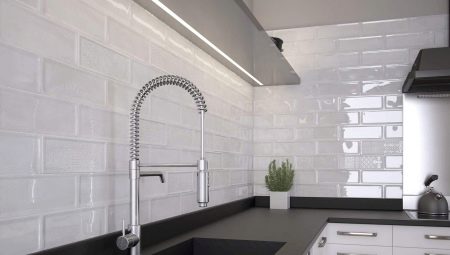
Ceramic tiles are an especially common backsplash finish in the kitchen. The finishing material has many varieties, one of which is tiles, which are similar to decorative bricks, and are generally known under the names "metro" or "hog". A hog for the kitchen is a simple, but at the same time, catchy solution for interior decoration.
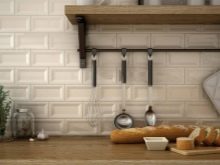
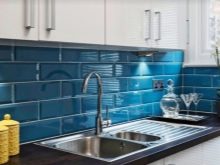

Features, pros and cons
A hog is a rather non-standard type of tile, which acquired its name due to its unusual configuration. The fact is that at the end of the matrix used in the manufacture of tile products there are two holes, which in appearance to some extent resemble the stigma of a pig. Today, tiles are gaining their former popularity, similar to the one that was in the 20s of the last century, when this facing building material was intensively used for facing the facades of structures and walls of metro stations (for this reason, it is equally referred to as subway tiles).
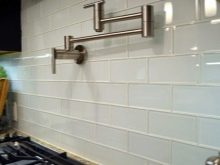
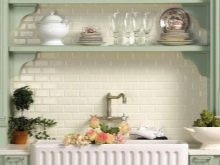
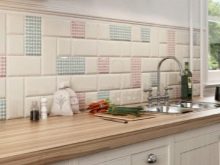
Modern metro samples are distinguished by a neat rectangle shape, have a sleek stylish texture and a monochromatic color scheme (patterns and all kinds of ornaments are not allowed). The surface of the product may have a shiny or “worn” surface.
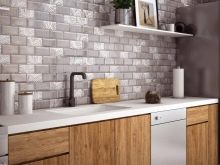

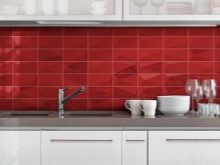
The tile has a volumetric bevel (ends), as a result of which the boar is intensively used in the design to give the space volume.
The main distinguishing feature of this building material is the possibility of using it in the organization of various interior design: refined and solid, luxurious and colorful. At the same time, mosaic tiles equip a large surface area with whole fragments, which significantly reduces the presence of seams between tiles.

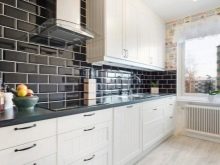
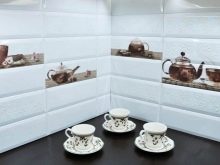
This is extremely important, since the subsequent state of the finish itself depends on the number of joints between the tiles.
The hog tile is extremely in demand not only due to its appearance, but also for a number of other positive qualities:
- high water resistance;
- a variety of colors and configurations;
- long service life (this is justified by the high quality of building materials);
- immunity to temperature fluctuations;
- decorativeness;
- ease of maintenance;
- globality of use - the tile is suitable in essence for any interior style.
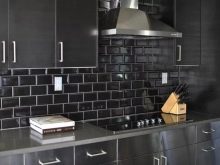
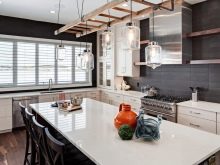
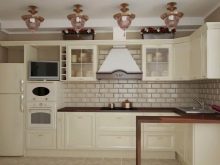
Minor disadvantages include only the presence of seams, in which dirt accumulates over time.
Dimensions (edit)
As for the dimensions of the tiles, basically the length of the subway tile corresponds to two or three of its widths. The nominal size of the hog, depending on the manufacturer and collection, ranges from:
- length - 12-30 centimeters;
- width - 6-10 centimeters;
- the most demanded nominal size - 7.5 × 15 centimeters, equally popular options are 10 × 20, 15 × 30 and 7.5 × 30 centimeters.

Color spectrum
The most popular tile color for the hog is white. Several factors are its key strengths.
- Universalism. Suitable for various types of premises (design, area, sunny or not side).
- Non-marking tone gradation. In contrast to the dark colored tiles, the white hog does not show contamination in the form of water droplets or fingerprints. Small drops of fat are almost invisible on it, it is easier to care for it.
- Space. It's no secret that the white color has a great influence on the integral reflection of the room - it visually enlarges the free space, makes it airy and light.
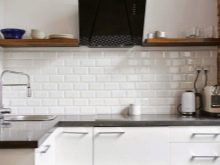

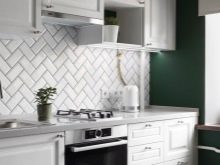
Other colors
Two other trendy colors - gray and beige. Often, the choice of color palette depends on the interior design and color of the kitchen set.

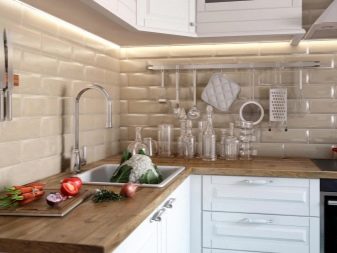
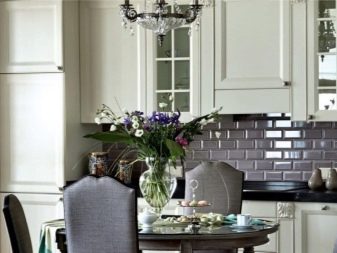
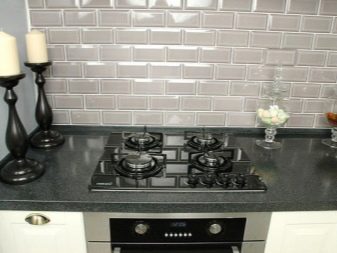
These colors are extremely spontaneous, serene, neutral. A gray hog is more suitable for a modern style, and a beige one is more suitable for a classic one.
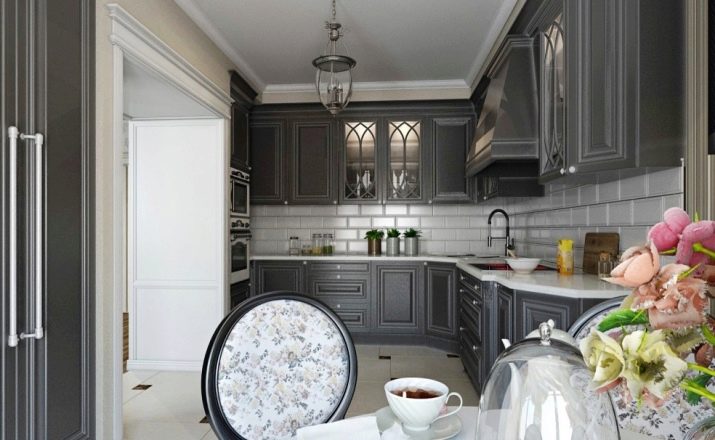
Like white, beige and gray, they make it possible to maintain a kitchen apron in its original appearance for a long time, since it does not allow dirt to catch the eye on a dim background.
The latest trend in color development is black. As a rule, the metro in this version is glossy. An apron like this looks great in modern kitchens, creating a contrast with white kitchen drawers. A black apron will fit only for rooms with a large footage - it will simply get lost in a small kitchen.

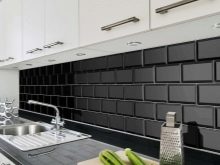
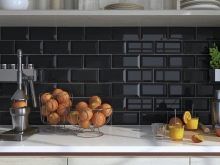
Combination
The boar is produced in the most daring and colorful samples of the color palette. Natural colors - blue, red, yellow, green - are usually used in rustic directions, and artificial colors - lilac, purple, light green - in more advanced, industrial design.
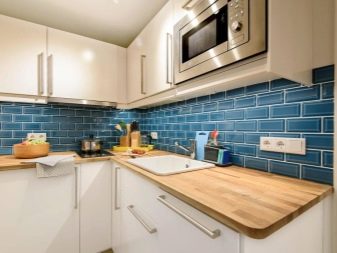

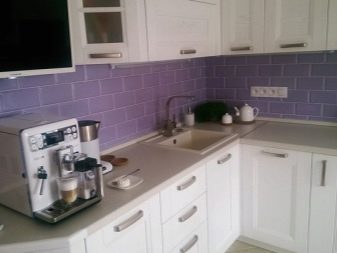
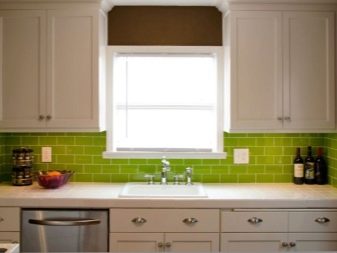
Let's figure out how to choose a combination of several colors at the same time. Quite simply, you only need to choose colors from one color range... For example, blue. From this color, it is required to select two supporting, lightest shades. Light turquoise and blue are perfect. Then the tiles are laid out in random order, balanced by colored triangles.
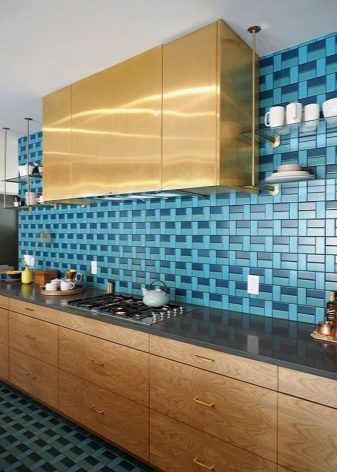
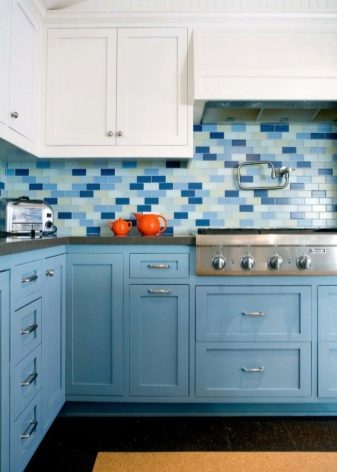
It is strictly forbidden to use strongly pronounced colors, for example, red, green, blue. If this combination is still acceptable as a mosaic, then the "hog", laid in a similar way, will ripple to such an extent that the design becomes extremely difficult to perceive. In some situations, it can cause migraines and even loss of appetite.
The exceptions are monochrome color combinations - black, gray and white - such an alliance can bring beauty to any room.
Manufacturers overview
You can find hog ceramic tiles in the assortment of goods of Russian and Spanish companies. Moreover, in fact, these two states are recognized as favorites in the manufacture of such tiles. A huge selection of beveled ceramic tiles is available, for example, from the factory Monopole Ceramica.
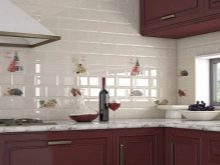


Russian trade mark Kerama marazzi can be found metro in collections such as Cersanit, Butterfly, Gamma, Vogue from Azori, Mattone, Accord, Campiello.

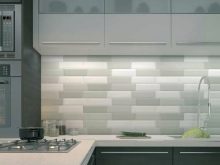
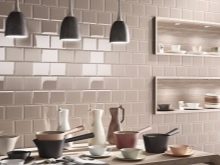
Companies offer tiles of classic white colors or special popular colors - milky yellow, blue-green, pistachio. In addition to the "bricks", in any collection there are decorative inserts with images, borders
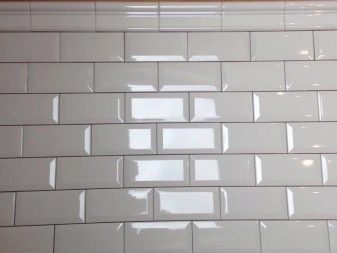
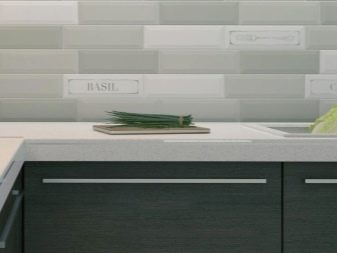
... You can choose a one-color version or combine two diametrically opposite colors.
Russian manufacturers work, focusing on the development process of material production in the state: the quality does not deteriorate from fairly affordable prices, but the latest collections of tiles are constantly being produced.

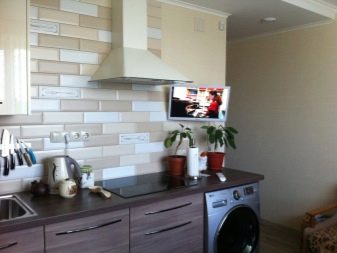
The works are carried out on high-quality equipment using Western technologies.
Brands that have a recommendation and an impeccable track record: Uralkeramika, Ceradim, Atlas Concorde Russia, Kerama Marazzi, Shakhtinskaya tile and others.
Spain usually offers the brightest and most noteworthy specimens in terms of color palette. This is due to the local flavor.
Russian companies produce a stylish traditional hog that will fit the bulk of interiors in our country. In addition to color, the subway from various collections stands out for its texture: glossy, matte, sprayed, curly elements, ribbed, and the like.
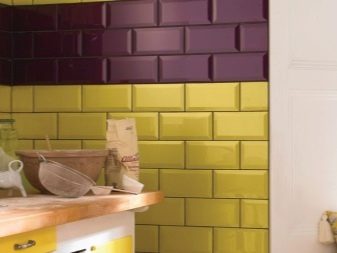
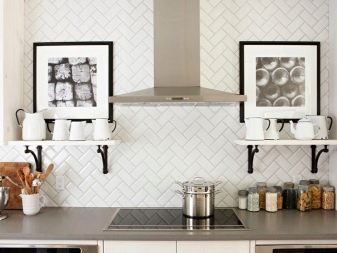
The dimensions of the tiles are different for the countries of origin. Domestic firms, for example, Kerama Marazzi, offer modifications of 85 × 285 millimeters. Spain produces tiles measuring 15 × 7.5 centimeters, 10 × 20 centimeters, and Poland offers, in addition to the standard, samples with a size of 24.5 × 6.58 centimeters.
How to choose?
In the process of choosing a tile, you must follow simple rules:
- it is required to consider each element of the interior of the room, the color scheme, observing the techniques of ergonomics;
- the smaller the kitchen area, the smaller the elements must be selected;
- if there are doubts about the color scheme, it is necessary to select the tiles for the kitchen apron in white colors, it will perfectly match the kitchen set;
- tiles should be purchased with a decent margin - not less than 15% of the total volume;
- most importantly, it is required to check that all components are from the same batch.
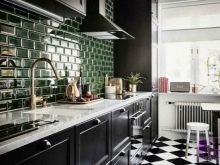
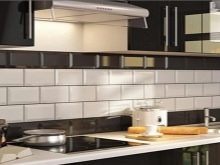
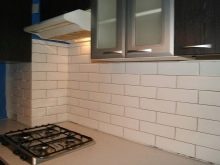
Styling options
There are several ways of laying out the boar.
- Scattered or horizontally with an offset - this is an ordinary brickwork that reproduces brickwork with accuracy. The fundamental goal when laying with this method is to maintain a horizontal line.
- Stacking, otherwise - seam in seam, looks great in Scandinavian design. Clear vertical seams will look austere and laconic.
- Herringbone - a rather non-standard styling that will surely impress your friends. Tiles with this design are laid at an angle of 90 or 45 degrees.
- Laying tiles diagonally is also quite unusual and fits perfectly into small kitchens.
- Vertical stacking with an offset, it will visually increase the area of the apron. If a not very large apron is planned in height, it is preferable to purchase a tile of a small format.
- Stacking the vertical layout looks pretty eccentric too.
- Imitation of weaving - a rather curious method of laying, which reproduces basket weaving. It looks most effective in two-color or monochrome.This styling looks great in a rustic or rustic style of interior design.
- Mosaic styling Is a space for creativity. The scheme itself is trivial and constant: the mosaic is assembled from small pieces, usually squares. But the filling is up to you: it can be completely monochrome, or it can turn into a complex pattern. In a modern interior, you can turn mosaics into pixel art, or lay out whole texts from it.
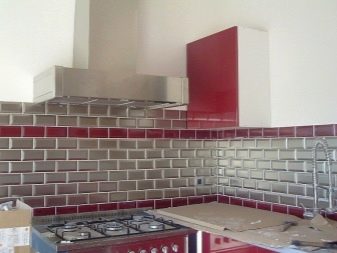
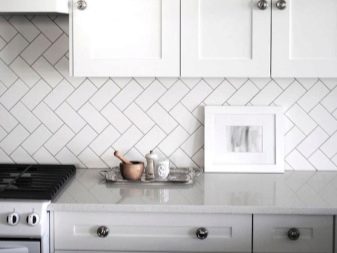

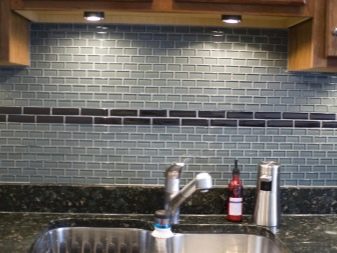
Beautiful examples
There are quite a few attractive and original solutions for which the hog is used. Let's analyze some of them.
- Bright colors. Tiles with the most common layout will "sparkle" if you take not a classic white shade, but any catchy and attractive color. Glossy surface, contrasting grout - all this multiplies the effect.

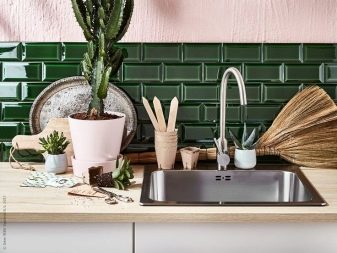
- Combination with elements of a different kind. An interesting result is obtained by combining the hog with other types of facing material, for example, square or rectangular. Such a solution makes it possible to freely solve the problem of corner design, since trimming may not be required. An apron made of tiles of various types, but of the same tone, comes out especially elegant.
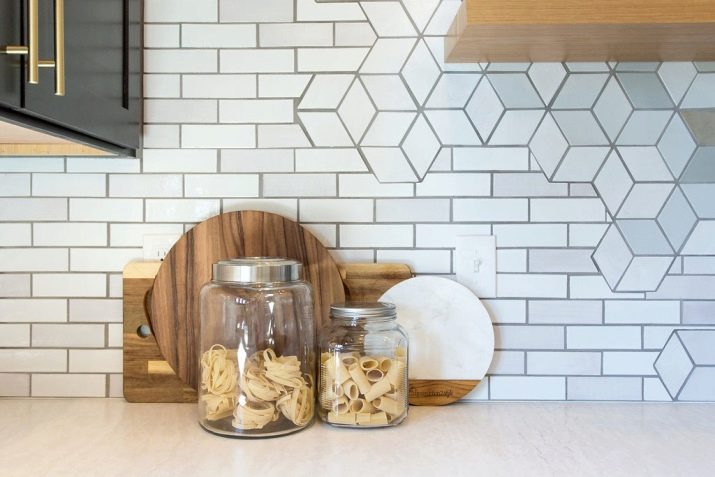
- Uniform alternation of repeating shades of color. If you choose the right elements of various shades and lay out a drawing from them, a charming apron will come out. You can apply sharp color contrast or soft transitions. It will be interesting to play with matte and glossy elements.
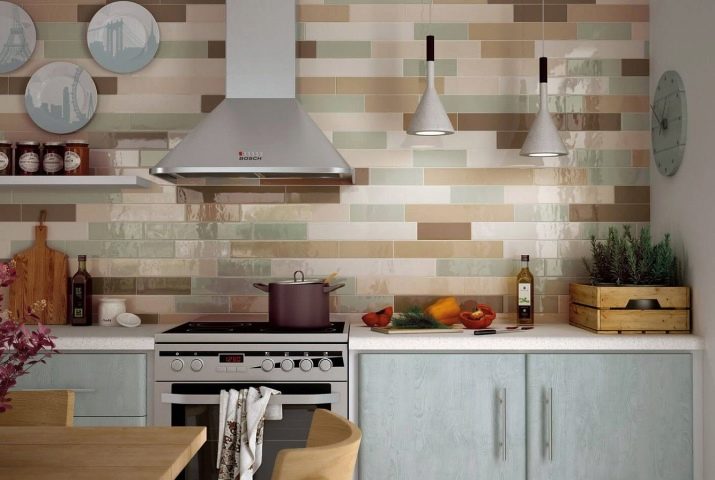
- Alternating with smaller tiles... With the ratio of the width of the parts to the height of 2: 1, it becomes possible to lay it like a checkerboard. Both a one-color apron with a similar styling and a colorful decor of the working area look attractive.
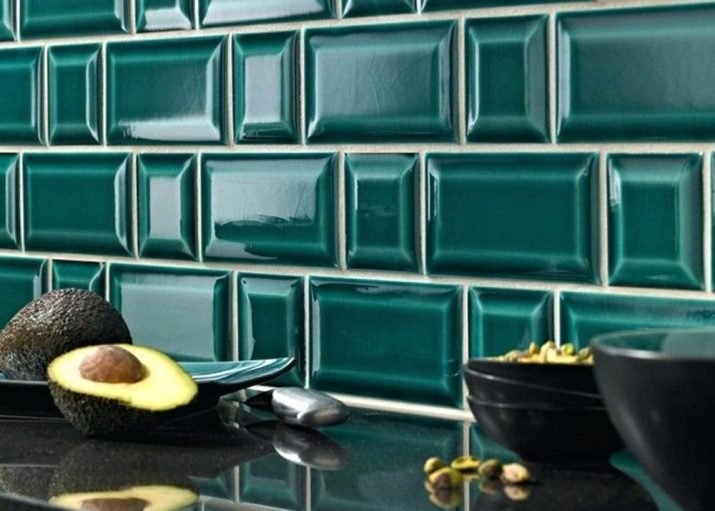
- Laying mini-tiles. Manufacturers offer miniature subway tiles. These are small-sized products with the usual proportion of the sides. Made in different colors and styles. The layout scheme can be chosen whatever you like. Due to its small size, the mini-pig looks quite impressive, although it should be noted that it is extremely laborious to lay.
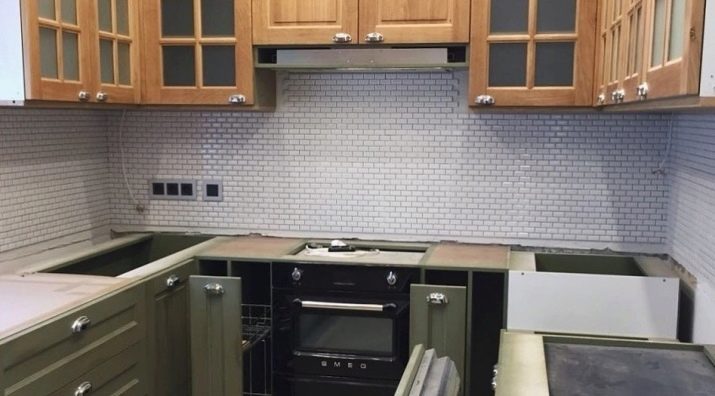
See below about the features of the hog tile.








